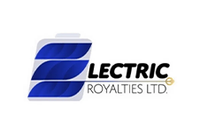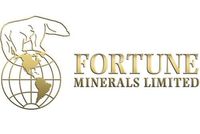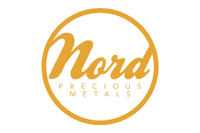Cobalt Trends 2018: Prices Fall, Nickel Threat Creeps Up
What happened in the cobalt market this year? Here’s a look at the major cobalt trends in 2018, from supply worries to electric car demand.
After a bright 2017, cobalt kicked off 2018 on the right track, with prices increasing during Q1. However, with plenty of news from the Democratic Republic of Congo (DRC), prices declining and the battle for the electric vehicle (EV) battery heating up, cobalt lost some momentum.
As 2018 comes to a close, the Investing News Network is looking back at the main trends in the space this year, from discussions around changing battery chemistry to rising EV demand to responsible sourcing.
Read on to learn what happened in the cobalt market in 2018, including supply and demand dynamics and what market participants had to say during each quarter of the year.
Cobalt trends Q1: Prices remain high despite DRC news
Cobalt started the year strong after ending 2017 on a positive note, with metal prices increasing more than 20 percent. As in the previous year, cobalt continued to make news headlines as companies announced deals, supply issues remained a concern and prices trended upward.
In fact, many carmakers and technology companies continued to show an interest in securing supply of cobalt, a key element in the lithium-ion batteries used to power electric cars.
One of the most significant deals of the quarter came in mid-March, when mining giant Glencore (LSE:GLEN) agreed to sell 52,800 tonnes of cobalt contained in hydroxide to Chinese battery recycler GEM (SZSE:002340) over the next three years.
Securing supply directly from miners is a sign that companies are not only concerned about having enough metal to meet future need in the market, but also about bringing transparency to the supply chain. That’s because more than 50 percent of cobalt is mined in the DRC, where mining has been often linked to human right abuses and child labor.
“[This deal] is not only significant because it means 20,000 tonnes of cobalt are off the market, but also because it is 20,000 tonnes of clean DRC material that is a prime target for EV/electronics manufacturers looking to secure supply at the mine level,” Benchmark Mineral Intelligence analyst Caspar Rawles told the Investing News Network at the time.
During the first quarter, the DRC introduced a new mining law to see taxes and royalties for cobalt increase to 10 percent if the metal was categorized as “strategic.”
“[The new law is] going to raise the cost of doing business in the country, but I actually think that over the next two years, the amount of cobalt coming from the DRC is going to increase as opposed to decrease,” battery metals expert Chris Berry of House Mountain Partners said at the time.
Looking over to prices, cobalt prices rose beyond most expectations throughout Q1, with the most rapid rises occurring in the final few weeks of the quarter, according to Benchmark Mineral Intelligence.
“The rises were helped by a number of factors … the most significant was increasing demand from the battery sector, but also strong demand from more traditional uses such as superalloys,” said Rawles.
“Metal prices are still used as the basis for pricing structures in long-term supply contracts for cobalt raw materials at the mine level. That’s why increases in the metal price have the power to impact the whole industry, including cobalt chemicals that are used in batteries,” he explained.
LME cobalt started the year at US$75,000 per tonne and climbed 24 percent to end Q1 at US$93,250.
Cobalt trends Q2: Tesla’s plans threaten cobalt’s future in batteries
During the second quarter of the year, interest in cobalt continued to increase around the world, with most market developments coming from the DRC.
In April, DRC state-owned miner Gecamines started legal proceedings to dissolve its Kamoto copper-cobalt operation with Glencore’s Katanga Mining (TSX:KAT).The dispute was resolved in June, but Glencore’s nightmares continued during the quarter.
“Katanga is one of the key new sources of supply for the cobalt market in the coming years and any disruption to its ramp up could cause the cobalt market to return to deficit in the coming years,” George Heppel, senior analyst at CRU Group, said at the time.
Also impacting the market and investor sentiment was the new DRC mining code mentioned above. An alliance of miners in the country told the government that the DRC could lose US$3 billion in over 10 years if the legislation remained as it is.
Looking over to demand, the biggest announcement of the quarter came from Tesla (NASDAQ:TSLA), which said that it would reduce cobalt use in EV batteries to “almost nothing,” increasing investors’ concerns about future demand for the metal.
During the quarter, the battle between nickel and cobalt heated up, with many experts saying cobalt demand will continue to surge even if its content in batteries is reduced.
This year, there’s been much discussion around the possibility of lithium-ion batteries shifting to a 811 nickel-cobalt-manganese (NCM) cathode chemistry. That means eight parts nickel, one part cobalt and one part manganese.
“The impact of 811 on the lithium-ion battery cathode market is going to be minimal in the short term,” Benchmark Mineral Intelligence said in a report.
Looking over to prices, in the second quarter the market saw a correction, with prices ending down 16 percent at US$77,300.
According to Rawles, the aggressive price rise the market saw in Q1 was somewhat unexpected. “Not the fact that prices increased, but the speed at which it happened,” he said.
“Conversely, my opinion is that the price correction we have seen in Q2 was expected by a reasonable portion of the market. So to some extent [cobalt] has performed in a way that was anticipated, but more so in Q2,” he added.
In terms of the sulfate market, prices fell a little more, but have shown signs of stabilizing. Rawles believes the bearish sentiment that came into play in China in April was somewhat of a surprise.
“In my opinion this isn’t necessarily a function of poor demand, but factors impacting buying patterns related to cash flow and credit,” he added.
For Roskill Director Jack Bedder, a small amount of volatility around this level is expected depending on the amount of spot trade and the number of factors impacting the market.
Cobalt trends Q3: Supply and price concerns take over, battle for EV battery continues
During the third quarter of the year, most market developments came once again from the DRC. The country’s mines minister said the new mining code could not be called into question, though the new legislation had been fiercely opposed by international miners.
Meanwhile, Korean battery makers SK Innovation (KRX:096770) and LG Chem (KRX:051910) announced they were working on NCM 811 cathode/cells for EVs, but pushed back commercial production during the third quarter, highlighting the difficulties of using new chemistry for batteries.
According to Benchmark Mineral Intelligence, the challenges around introducing this technology have been tougher than many expected — the London-based firm doesn’t see the change having a material impact on the supply chain before 2020 in China and 2021 in the international market.
Other important news in the sector during the three-month period included top cobalt producer Glencore showing a cobalt production increase of 31 percent after restarting output at the Katanga mine. The miner, which has been facing some legal hurdles, is seeking to double its production of cobalt in the next two years.
Looking over to prices, cobalt prices declined beyond most expectations throughout Q3 as the quiet summer months and a Chinese sentiment change put pressure on prices. LME cobalt metal prices started the quarter at US$74,500 and declined almost 23 percent to end the period at US$57,500.
According to Rawles, there were several factors that impacted the market. Those include rapidly rising prices in 2017 and Q1 2018, changes in payment terms in China, a lack of credit tied to Chinese deleveraging, the change to the Chinese new energy vehicles subsidy policy and trade tensions with the US, which have impacted the wider economy.
“The reality is that the supply/demand fundamentals haven’t changed, and it shows that the cobalt market can be sentiment driven as much as it is by supply and demand,” Rawles explained.
Roskill’s Bedder said he expected cobalt prices to bottom out at US$35 per pound. “It fell slightly lower than that. A range of $35 to $40 is expected over the next 12 months, but volatility is possible,” he added.
Cobalt trends Q4: Will nickel steal cobalt’s crown?
In Q4, the most significant news came from Glencore’s Katanga Mining, which suspended cobalt production at its Kamoto mine after finding high levels of uranium in the ore.
The company announced plans to build a US$25-million ion-exchange system to remove the metal found in its product, which exceeded the acceptable levels for export through main African ports.
The DRC government did not take long to respond to Glencore’s claim, criticizing the company’s “unilateral” decision and launching an audit into how radioactive cobalt left the country.
After the news, Rawles said the timing for cobalt production issues at Katanga seemed opportunistic as Glencore was negotiating hydroxide supply deals for 2019.
Benchmark Mineral Intelligence expects the impact of the export ban to be minimal, assuming there are no other issues with growing DRC supply, particularly the ramp up of ERG’s neighboring RTR project.
“The industry slipped into surplus this year where it was expected to remain for the next 3 to 5 years, and Glencore’s 9-month delay shouldn’t have a significant long-term impact on the market,” Managing Director Simon Moores said in a recent report.
But developments like this undermine cobalt’s long-term role in the space and destroy investor confidence in a metal that does not need any extra help in doing so, Moores added. The move by Glencore could also force battery makers to once again look at the investment case for NCM 811 or follow the NCA (nickel-cobalt-aluminum) Tesla route.
In December, the DRC finally issued a decree declaring cobalt a “strategic” substance, increasing royalties to 10 percent.
Rawles said the announcement was expected for awhile. “With current market dynamics, particularly in China, it is going to be challenging for producers to push the increased costs downstream near term, [which will be] inevitably passed to consumers in the medium term,” he added.
Looking over to prices, LME cobalt continued its downtrend during the last quarter of the year. Prices started at US$57,500 and were sitting at US$54,750 on December 11— a 4.78-percent decline during the period and a 27-percent decrease year-to-date.
Interested in knowing what else happened in the cobalt space this year? Check out our top cobalt stories of 2018. And for investors interested in learning more about what’s ahead for cobalt, keep an eye out for our upcoming cobalt outlook with commentary from analysts and companies.
Don’t forget to follow us @INN_Resource for real-time news updates!
Securities Disclosure: I, Priscila Barrera, hold no direct investment interest in any company mentioned in this article.
Editorial Disclosure: The Investing News Network does not guarantee the accuracy or thoroughness of the information reported in the interviews it conducts. The opinions expressed in these interviews do not reflect the opinions of the Investing News Network and do not constitute investment advice. All readers are encouraged to perform their own due diligence.


